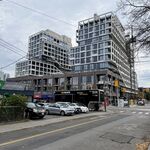Hipster Duck
Senior Member
Eglinton Crosstown could compare to the C-train if it were handled correctly. More likely than not though, it will be dumbed down so as to be "compatible" with the rest of the city's glorified streetcars. It wouldn't surprise me if they ended up giving an order that all trains must stop dead before entering an underground station, ring the horn and check for passengers, then proceed into the station. Has anyone been on the Harborfront "LRT" recently? The entire underground segment proceeds at snail's pace of late.
This sounds kind of rancorous and Dichotomyish, but I avoid the Harbourfront LRT like the plague not only because of the speed of the line, but also because of the dankness and unpleasantness of the two underground stations. Both seem to have been built to a minimum infrastructure standard with the ambience and humidity of a wine cellar. Queen's Quay, in particular, has a funny smell and the at-grade crossing to the other platform is positively third world. These streetcar "stations" remind me of some of the more ill-maintained facilities in older American cities that have retained a legacy streetcar network; in particular, I'm reminded of some stations on Boston's Green Line or some other dank trolley stations in Philadelphia. The main difference, of course, is that the Boston and Philly stations are a hundred years old and predate basic safety and disability legislation. Queen's Quay and Union streetcar stations were built in 1990 but feel like they were roughed out in 1890.
I don't know anything about the design of the underground stations for Transfer City lines (eg: Eglinton, Jane) but I hope they're not like the Harbourfront LRT "stations".










